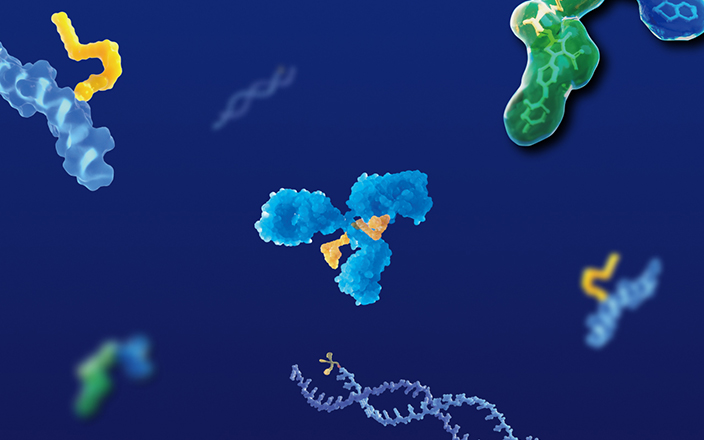While several payloads of antibody-drug conjugate (ADC) have been marketed, challenges persist in accurately assessing tissue distribution, in vivo metabolism, and ADC excretion due to factors such as low systemic exposure of payloads, severe matrix interference, and the unpredictability of cleavage products of non-cleavable ADCs.
How to Select Ideal Radioisotopes for the Radiolabeled Synthesis of Payloads and Antibodies?
Payloads are usually radiolabeled with low-energy radioisotopes such as 14C or 3H, however, 3H labeling is more difficult and costly. Consequently, while meeting the detection requirements, it is recommended to choose 14C to label payloads. Furthermore, antibodies are usually radiolabeled with high-energy radioisotopes such as 125I or 89Zr. 125I is the most common choice for labeling due to its ready availability, simple labeling process, and its minimal impact on antibody activity.
How to Select ADC Drugs with Optimal ADC DAR in the Discovery and Development Phase?
In the development phase, highly sensitive radiolabeling technology allows the accurate determination of ADC PK behavior in vivo. In addition, labeling naked antibodies, ADC antibodies, and payloads separately, as well as comparing the difference in the in vivo behavior of different radiolabeling locations and conjugation methods could facilitate the selection of optimal ADC candidates at the earliest possible stages.
Why is Adopting Radiolabeling Techniques to Profile the In Vivo Characteristics of the ADC Drug Recommended?
It is important to highlight that quantitative whole-body autoradiography (QWBA) can provide average concentrations within whole tissues and can differentiate concentration differences among regions within the tissue and then quantify tissues by region. Compared with conventional harvesting methods, QWBA offers incomparable advantages in assessing dose-response relationships between the ADC distribution depth in tumor tissues and drug efficacy.
In animal tests, plasma concentration and tissue distribution results are essential for ADC efficacy and safety assessments, and concentrations of ADC, total antibody, and unconjugated payloads should be assessed. It is recommended to adopt radiolabeling techniques to track the tissue distribution behavior in vivo and to examine whether the tissue distribution characteristics of payloads and antibodies align after labeling them separately.
If you want to learn more details about the use of radiolabeling techniques for ADC PK studies, please read the article now.
Committed to accelerating drug discovery and development, we offer a full range of discovery screening, preclinical development, clinical drug metabolism, and pharmacokinetic (DMPK) platforms and services. With research facilities in the United States (New Jersey) and China (Shanghai, Suzhou, Nanjing, and Nantong), 1,000+ scientists, and over fifteen years of experience in Investigational New Drug (IND) application, our DMPK team at WuXi AppTec are serving 1,500+ global clients, and have successfully supported 1,200+ IND applications.
Talk to a WuXi AppTec expert today to get the support you need to achieve your drug development goals.
Related Services and Platforms




-

 Radiolabeled In Vivo ADME StudyLearn More
Radiolabeled In Vivo ADME StudyLearn More -

 Novel Drug Modalities DMPK Enabling PlatformsLearn More
Novel Drug Modalities DMPK Enabling PlatformsLearn More -

 Radiolabeled MetID (Metabolite Profiling and Identification)Learn More
Radiolabeled MetID (Metabolite Profiling and Identification)Learn More -

 Radiolabeled Non-Clinical In Vivo ADME StudyLearn More
Radiolabeled Non-Clinical In Vivo ADME StudyLearn More -

 Quantitative Whole-body Autoradiography (QWBA)Learn More
Quantitative Whole-body Autoradiography (QWBA)Learn More -

 Human Radiolabeled Mass Balance StudyLearn More
Human Radiolabeled Mass Balance StudyLearn More -

 Radiolabeled Compound SynthesisLearn More
Radiolabeled Compound SynthesisLearn More
Stay Connected
Keep up with the latest news and insights.










